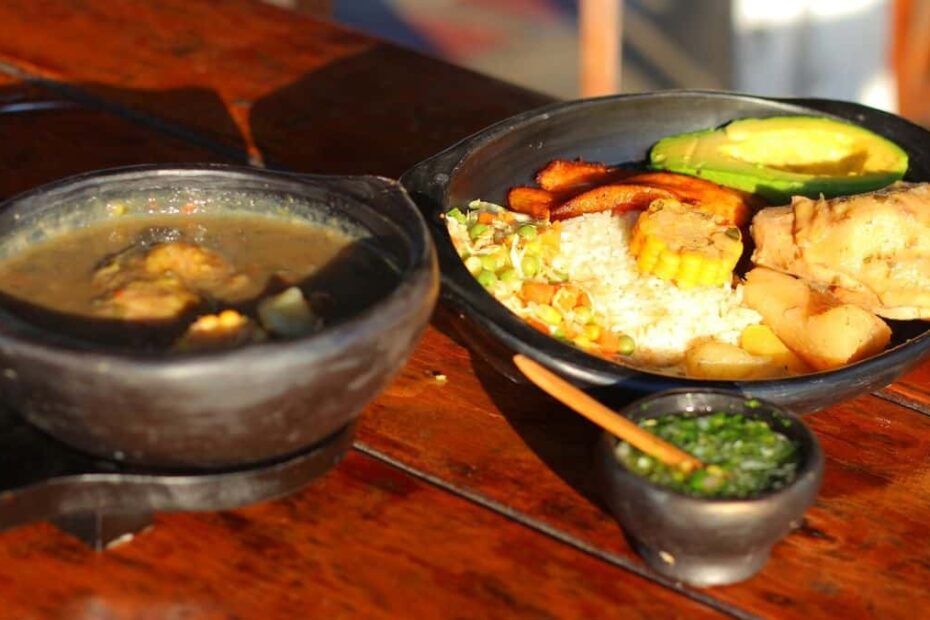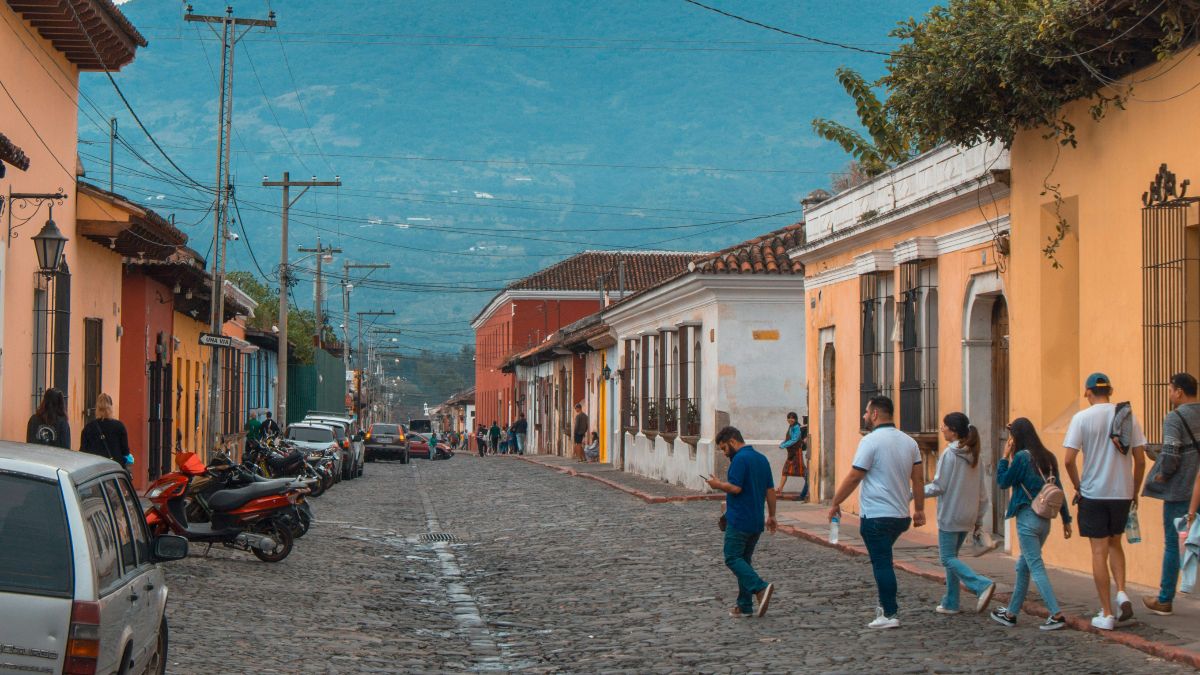Discover four main Central American food staples that form the foundation of the various cuisines around the region, from Belize to Panama. In this article, you’ll learn about their nutritional benefits and traditional uses to add delicious and healthy variety to your meals.
Central American cuisine comes in a rich tapestry of flavors, reflecting the region’s vibrant history and indigenous ingredients. While it may not have the fiery reputation of its northern neighbor, Mexico, Central American food still offers a unique blend of comfort and taste. The foundation of this cuisine lies in a handful of delicious and healthy staples found in practically every Central American kitchen. Let’s look at four key ingredients that contribute to the heartiness and nutritional richness of Central American cooking.
1. Corn: A 4,000-Year-Old Central American Staple
Corn (maíz) reigns supreme as the numero uno of all Central American food staples. Cultivated in the region for over 4,000 years, corn holds immense cultural significance. Most Central Americans enjoy corn in some form daily, often through masa, a soft dough made from nixtamalized corn. Nixtamalization involves soaking and cooking corn kernels in an alkaline solution (often limewater) before grinding them. This process enhances the corn’s flavor and nutrient profile, making it more bioavailable for the body.
Masa forms the base for an array of beloved dishes like corn tortillas, tamales, pupusas, and baleadas. But corn’s versatility extends far beyond these delights. Central Americans enjoy corn whole too – grilled, steamed, or chopped and added to soups and stews like Panama’s hearty sancocho.
Nutritionally, corn is a powerhouse. It’s a good source of carbohydrates, fiber, and protein, keeping you energized throughout the day. Corn also boasts essential vitamins and minerals like Vitamin C, manganese, potassium, phosphorus, magnesium, zinc, and B vitamins, including folate, crucial for pregnant women.
View this post on Instagram
2. Rice: A Daily Central American Diet Staple
Rice isn’t an indigenous staple to Central America; it arrived in the region with the Europeans and Africans. Today though, it’s a rare thing to find a Central American kitchen that doesn’t feature rice on the daily menu. This versatile grain serves as a perfect accompaniment to most dishes, from casados (a traditional plate with meat, beans, and plantains) to arroz con pollo (chicken with rice) and is enjoyed for breakfast, lunch, and dinner.
Rice is a complex carbohydrate, providing sustained energy. It’s also a good source of fiber, magnesium, potassium, and B6 vitamins. Additionally, the fiber content in rice aids in gut health, promoting digestion and weight management.
View this post on Instagram
3. Beans: A Protein-Packed Central American Favorite
Beans are the next staple, forming a quintessential Central American food pairing with the aforementioned rice. From gallo pinto (Costa Rica and Nicaragua’s national breakfast treasure), to “rice n beans” cooked in coconut milk along the Caribbean coast, beans find their way into countless dishes – tacos, stews, casados, and more.
Central American countries have their favorite bean varieties. Black beans tend to reign supreme in Belize, Costa Rica, El Salvador, Guatemala, and Panama, while red beans hold court in the kitchens of Honduras and Nicaragua.
The nutritional benefits of beans are truly impressive. A single cup provides a whopping 21 grams of protein, making them a perfect meat alternative, especially for vegetarians and vegans. Beans are also loaded with fiber, carbohydrates, and negligible fat. Their vitamin and mineral profile is equally impressive, boasting potassium, vitamin B6, vitamin C, iron, magnesium, and calcium. Beans are a true superfood deserving of a place in kitchens worldwide.
View this post on Instagram
4. Limes: A Zesty Central American Citrus
Limes are another essential ingredient in Central American cooking. Their bright, acidic flavor adds a zesty touch to countless dishes. A favorite use of lime juice is in ceviche, the refreshing seafood dish “cooked” without heat using lime’s acidity. Another way to use limes is in drinks, adding it to a cold beer with salt and tomato juice to create a michelada, or making a margarita.
Limes are more than just a flavor enhancer, though; they’re a treasure trove of Vitamin C and phytonutrients, promoting overall health. Citrus fruits like limes are natural appetite suppressants and can aid in weight management.
When looking for limes in Central America, you’ll see them called “limones” in most places. The big yellow lemons you might be used to are hard to find in the region, so what you see as limes actually called lemons. It stops being confusing after a while!
View this post on Instagram
A Culinary Journey Through Central America
The four staples discussed above form the foundation for a vast array of regional specialties across Central America. Here’s a taste of some traditional dishes featuring these staples in each country:
- Belize: Belizean cuisine reflects its Mayan and Garifuna influences. Look for tasty fry jacks (fried dough made with flour) for breakfast, served with beans and stewed meats. Hudut, a rich stew with coconut milk, often features chicken or seafood and incorporates rice and plantains.
- Guatemala: Guatemalan staples shine in pepian, a hearty stew featuring meat (often chicken or beef) simmered in a rich sauce of tomatoes, tomatillos, and pepitas (pumpkin seeds). Tamales filled with vegetables, cheese, or meats are another Guatemalan staple.
- Honduras: Honduran cuisine offers a comforting taste of home. Baleadas, flour tortillas stuffed with mashed beans, cheese, and scrambled eggs or other fillings, are a popular breakfast or street food. Don’t miss out on Honduran carne asada (grilled meats) served with rice, beans, and fresh tortillas.
- El Salvador: El Salvador’s pupusas are world-famous. These thick corn tortillas are stuffed with various savory fillings like beans, cheese, chicharrón (fried pork belly), or revueltas (a mix of beans and cheese). Yuca frita (fried yuca) is another popular side dish.
- Nicaragua: Nacatamales, large tamales filled with meat, rice, vegetables, and other ingredients, are a national treasure here. Vigorón, a combination of boiled yuca with chicharrones and a refreshing cabbage salad, is another must-try when exploring the tastes of Nicaragua.
- Costa Rica: Costa Rican staples take center stage in gallo pinto, the national dish featuring black beans and rice cooked with vegetables and spices (gallo pinto is also a national dish in Nicaragua, but with red beans, and the jury’s out on which version is better!). Arroz con pollo (chicken with rice) is another comforting Costa Rican staple. Don’t forget plátano maduro (fried ripe plantains) for a sweet treat.
- Panama: Panamanians love their plantains! Patacones (twice-fried plantains) are a popular snack or side dish. Sancocho, a hearty stew with meat, vegetables, and various starches like yuca, green plantains, and corn, is another Panamanian staple.
View this post on Instagram
Building a Central American Pantry
These four staples – corn, rice, beans, and limes – form the cornerstone of Central American cuisine. They’re not only delicious and affordable but also incredibly nutritious, contributing to a well-balanced diet. They’re not the only Central American food staples, though. Here’s a quick mention of a few others you might encounter:
- Plantains: These versatile cousins of bananas come in green and ripe varieties, used in both sweet and savory dishes.
- Yuca (Cassava): A root vegetable with a starchy texture, yuca is a popular base for soups, stews, and savory fritters.
- Beef/Chicken/Fish: Protein powerhouses featuring prominently in various Central American dishes, from stews and soups to grilled meats and fillings for tacos and pupusas.
- Potatoes: A familiar starchy vegetable enjoyed mashed, fried, or roasted, often incorporated into regional specialties.
- Avocados: The creamy “pear” of the region, enjoyed in guacamole, salads, and as a topping for various dishes.
Next time you’re looking to add some variety and health to your meals, consider incorporating these Central American food staples into your kitchen. You might just discover a whole new world of flavor and culinary delights! Explore the vibrant ingredients and step into the delicious world of Central American cuisine.




